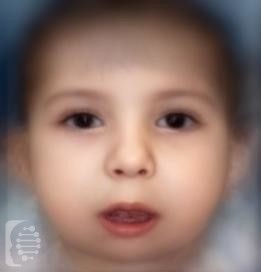What is Auriculocondylar syndrome?
Auriculocondylar syndrome is an extremely rare genetic condition that has, to date, been diagnosed in just 6 multigenerational families worldwide.
The main features and symptoms of the syndrome affect the ears and jaw.
It is an inherited condition.
This syndrome is also known as:
Constricted ears – malformed condyle of mandible Cosman ear; Question Mark Ears Syndrome
What gene change causes Auriculocondylar syndrome?
The syndrome is caused by mutations in the GNA13, EDN1, HDAC9, and PLCB4 genes. It is inherited in an autosomal dominant pattern or autosomal recessive.
In the case of autosomal dominant inheritance just one parent is the carrier of the gene mutation, and they have a 50% chance of passing it onto each of their children. Syndromes inherited in an autosomal dominant inheritance are caused by just one copy of the gene mutation.
What are the main symptoms of Auriculocondylar syndrome?
Symptoms related to the syndrome mainly affect the ears and jaw of individuals with the condition.
Individuals may have external ears that resemble question marks or are absent, smaller ears than average. Narrow hearing canals may also be present leading to possible hearing loss.
Abnormalities in the jaw joint specifically a short mandibular ramus is another major symptom. This might also include a small mouth and crowded teeth. A cleft palate is also not an uncommon symptom.
Other possible unique facial features of the syndrome include facial asymmetry and puffy cheeks.
Possible clinical traits/features:
Apnea, Cleft palate, Cleft at the superior portion of the pinna, Impaired mastication, Anterior open-bite malocclusion, Stenosis of the external auditory canal, Posteriorly rotated ears, Autosomal dominant inheritance, Preauricular skin tag, Overfolding of the superior helices, Macrocephaly, Round face, Postauricular skin tag, Speech articulation difficulties, Cupped ear, Dental malocclusion, Dental crowding, Mandibular condyle aplasia, Mandibular condyle hypoplasia, Low-set ears, Micrognathia, Narrow mouth, Glossoptosis, Hypoplastic superior helix.
How is it diagnosed?
To find out if someone has a diagnosis of Auriculocondylar syndrome, it is important to have a consultation and evaluation with a clinical genetic specialist. Specialists may also suggest specific genetic testing or other types of tests to help reach a diagnosis. FDNA’s AI technology can help speed up the diagnostic process by analyzing facial features and other health information.

